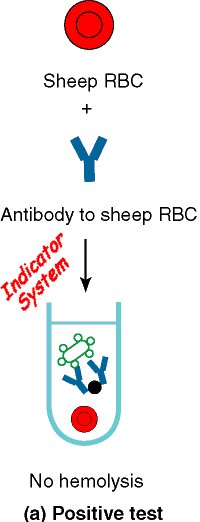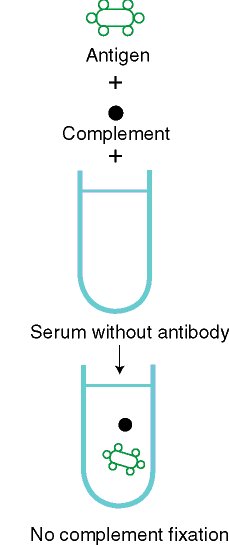Complement Fixation
Assay
In it's simplest form the test is used to
detect a patient serum antibody, so an ANTIGEN that is recognized by that
antibody is the first reagent shown. If the antibody is present in the
patient's serum it binds to the antigen, and the complement reagent is
completely consumed in the reaction. (The test can also be used to look
for antigen in the serum by modifying the reagents used).
The complement fixation assay indicator system uses sheep red blood
cells (SRBC) and anti-SRBC antibody.
If the antibody specific for the
antigen in the assay is present in the patient's serum, then complement is
completely consumed in the reaction and there is none left to bind to the
SRBC/anti-SRBC complexes.
A Test Positive For Ab =
NO
HEMOLYSIS
Scroll Down to See
Negative Test Results |
 | |

|
 |






